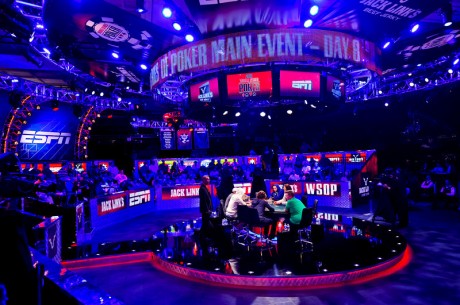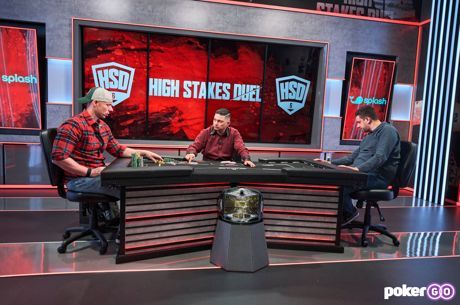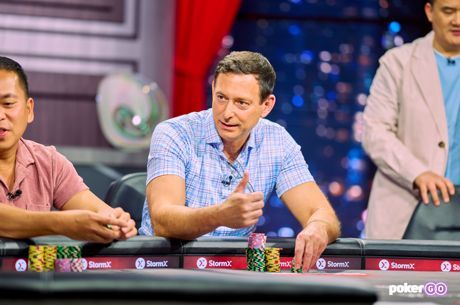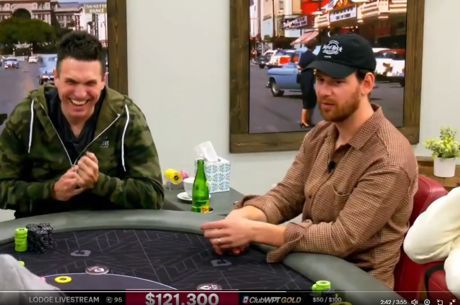PokerNews Debate: The 2011 WSOP Final Table Broadcast — Was It a Success?
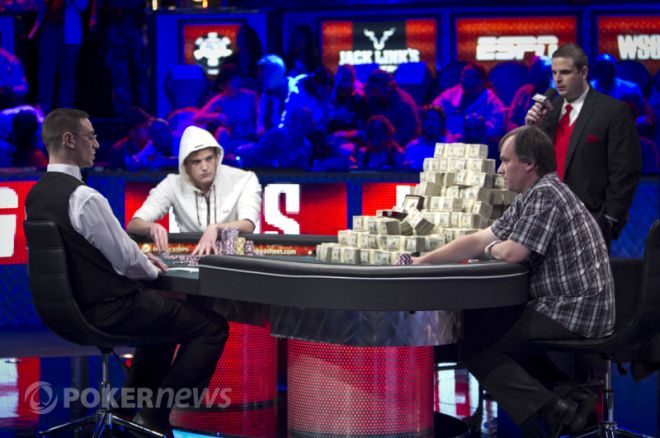
On Sunday, Nov. 6, the 2011 World Series of Poker reconvened to play down from the final nine to the top three. On the following Tuesday, those three played down to a winner, which ended up being the young German, Pius Heinz. All the while, the action was broadcast on ESPN and its affiliates on a 15-minute delay. The execution by POKER PROductions was smooth and impressed many in the poker industry; however, others questioned whether near-live play is entertaining enough for the general public.
Because of Nevada gaming regulations, the broadcast had to be on 15-minute delay to protect the integrity of the game. Likewise, hole cards were not shown until after completion of the hand. This meant viewers had to watch the hand play out without knowing what the players held, which harkened back to the 2002 WSOP broadcast, known as being akin to watching paint dry.
This raises the question as to whether poker on TV work without the benefit of seeing the players’ hole cards.
Eric Ramsey believes that showing the hole cards after the hand not only is entertaining but also adds new aspects to poker on TV; therefore, this year’s broadcast was a success.
When it comes to television, I tend to think of poker in the same vein as sports such as auto racing and golf. I'd venture a guess that, with the exception of the most hardcore fans, the majority of people watch these sports' broadcasts passively, little bits at a time. For lack of a better way to put it, they're a bit boring. Only the most die-hard fans are going to tune in from Thursday through Sunday for the full 72 holes. But one of my favorite things to do on a summer weekend is to put the tournament or the race on TV and multitask my way through the day. That's more or less how I envision most people taking in the WSOP broadcasts, and it seems like the perfect way to watch. Catch a few hands, go grab some lunch, then come back and catch up on the action.
When you play poker, you're continuously trying to put your opponents on a two-card hand. You're blind to what they're holding, so you have to keep reassessing your read as the hand progresses and new information becomes available. Showdown is the first chance you get to see the hole cards, and that's when you first find out how sharp your read was. So why not watch poker the same way you play it? I've always enjoyed quote-unquote "playing against" the people I'm watching on TV by trying to work out what they're holding. Everyone at this year's final table was trying to guess when Pius Heinz was bluffing, and hiding the hole cards until after the hand allows the viewers to play along with the guessing game at home.
The fact that not even the commentators know the hole cards also keeps the play-by-play honest and entertaining. When you have pros like Antonio Esfandiari and Olivier Busquet talking through the hands in real time, it gives the audience a little insight into the way a poker player thinks. It's like a free lesson from some of the game's greatest thinkers, and the presentation loses its edge when the commentators can see what the players are holding. Poker is a game of incomplete information.
What's more, showing the hole cards on a short delay allows for spectators to come see the action for themselves in person. This factor is especially noteworthy when it comes to the November Nine. One of the main things that makes the WSOP final table so special and so fit for TV is the atmosphere inside the theater. Families in attendance with flags flying from all over the world, a full house of rabidly chanting fans, and the occasional farm animal costume. You lose all that if you have to segregate the table behind closed doors.
This year's champ, Pius Heinz, clearly benefited from the support of his vociferous rail. I wonder what he'd say if we told him he had to play in a segregated, closed set. My guess is he wouldn't have liked that arrangement much, and I wouldn't have been too pleased about watching the nine play for poker's crowning prize from the secluded depths of a quiet, empty TV studio.
Chad Holloway believes showing hole cards while hands are in progress is essential to poker’s entertainment value and believes it can be done in the future.
Let me start by saying that I enjoyed this year’s broadcast of the WSOP final table on ESPN. I thought the commentating was entertaining, the action compelling (at least when it played down from nine players to three), and the overall quality polished. However, I am a poker fanatic and I love all things poker. That being said, I can’t help but worry the broadcast was too boring for the average viewer.
Exposing players’ hole cards has been credited as one of the factors leading to the poker boom, and removing them from the broadcast, at least until after the completion of the hand, seemed to be a regression in poker entertainment. Granted, showing the cards at the end of the hand allows viewers to play along during the action and see if they were actually correct, sort of like a Jack Link’s Wild Card Hand every hand; however, that can become quite tiresome after awhile, especially for those who’re simply looking to watch TV and not participate.
While a near-live broadcast was revolutionary for the WSOP, I’m not sure it proved more entertaining than an edited version. In the latter, every hand aired is crucial to the ultimate outcome, which makes every minute worth watching. In this year’s heads-up battle, viewers had to push through six hours of tedious hands before things finally came to a head. However, I do prefer the live broadcast over an edited version for one gigantic reason — once you know the winner of a competition, which is easily ascertained prior to any edited version, then watching the show is not nearly as entertaining. I liken it to watching a football game when you already know the final score. I just can’t do it. With that said, I concede a live, or near-live, broadcast is better than an edited episode and crucial to poker’s future.
So how can poker have a live broadcast with the entertainment benefits provided by hole cards? I think the WSOP ought to consider taking a page from the 2011 PokerStars Caribbean Adventure, which was also broadcast live, and sequester final tablists, their supporters, and the staff in order to show hole cards.
The particulars of successfully sequestering everyone (signing of nondisclosure agreements, security check for mobile devices, not being able to leave until the broadcast was over, etc.) would no doubt be a nightmare, but being able to broadcast live with hole cards and no delay would be invaluable, especially for an event as big as the WSOP Main Event Final Table.
Of course a lot of details that would need to be ironed out for this to become a reality. Even the PCA had a plethora of blunders. Also, my entire argument would be proven mute if the Nevada Gaming Board simply would not allow hole cards to be shown during a hand, but I imagine there would be certain security measures that would appease even the Gaming Board.
Airing final tables live is a new innovation that needs to be refined. It is my opinion that in this alteration process, WSOP officials need to find a way to blend the entertainment value of seeing hole cards during the hand with the excitement of a live broadcast. Instead of viewers learning what just happened, the mystique of what is going to happen needs to be reintroduced. It wouldn’t be easy, but I believe it can be done.
Get all the latest PokerNews updates on your social media outlets. Follow us on Twitter and like us on Facebook today!


